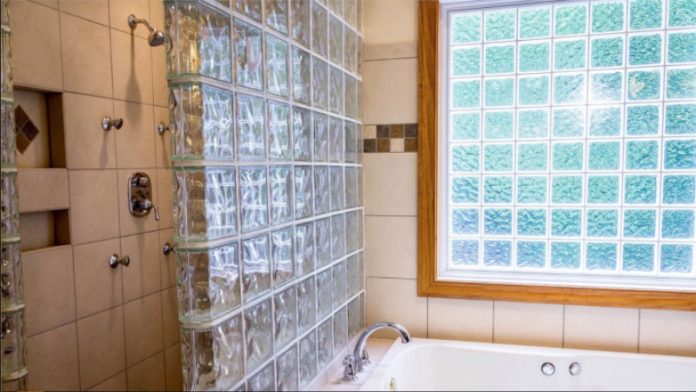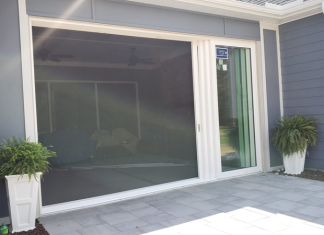Caulk is an insulating material which can be used to create a seal between two surface areas. This can be used all around the house. It is not just for use on your doors and windows; it can also used to seal tiles, bathtubs, countertops, backsplashes and more.
When considering them from a surface point of view, you should get the right caulk for windows and doors. Often mistaken as flexible window trim, caulk is found in different varieties including the following:
- Acrylic Latex Caulk
- Pure Silicone Caulk
- Refractory Caulk
- Butyl Rubber Caulk
- Latex Caulk
- Masonry Repair Caulk
Using caulk at home without the help of a professional can be a problem because all caulk can look the same. To a person who is new to DIY, this can pose to be a huge problem.
For them, picking between the different types of caulk can be difficult. That’s why we’re sharing some of the best tips you can follow to get the right caulk to seal gaps around the windows and doors in your home. To learn more, take a look at the following:
The Application Matters
The results are directly affected by the application method when it comes to caulking. Many people choose to use a self adhesive caulk strip which ensures a neater, more accurate application. Others are more comfortable using a caulk gun. Applying these strips is easier as they are more convenient and give you a product with the right consistency easily.
With manual application, there are more chances of error. You have to focus on proper application and the consistency of the caulk. If it is too thick and inconsistent, you can create pockets. Once you figure out your skill level, you can pick the best method for caulk application.
Waterproof or Non-Waterproof Options
Caulk is available in waterproof and non-waterproof variants. Most commonly, the non-waterproof variant is used around the house for general tiles or the splashguard. However, outdoor windows, doors, and even areas like the bathroom or the shower will require waterproof caulk.
Based on the humidity in your region, you might want to get waterproof caulk for your windows and doors as well. These will prevent water damage when humidity allows moisture to bead on the glass panes. These can then drip down and damage the window frame, door, or surroundings.
Materials of the Surface Area
When you’re choosing the caulk, make sure to pay attention to the surface area as well. Metal windowpanes will need a different kind of caulk. Similarly, wooden and brick surfaces will also require a different caulk so that it adheres properly. For example, wooden surfaces will require acrylic latex caulk. On the other hand, metal or masonry might require butyl rubber caulk. Both these are specially made for these surface areas.
To get the maximum benefits, you should prep and prime the area to ensure that the application is smooth and easy. Priming ensures that all bumps, gaps or even gouges are filled in. It prevents the caulk from being wasted and guarantees better adhesion to the surface area.
Indoor or Outdoor Use
Before you get caulk, also consider which side you will be using it for your doors and windows. Caulk for use indoors and for use outdoors is completely different. Outdoor caulk is made to be more waterproof (unless it is meant for use in the bathroom). This type of caulk is designed to withstand the elements and is more resistant to exposure to strong sunlight or rainfall.
Caulk for indoor use is not as heavy-duty as outdoor caulk. It is more delicate, easy to blend in, and designed to be as neat as possible. Outdoor caulk tends to be stickier in the application and can be difficult to apply neatly. However, it is more durable and resistant to weather. On the other hand, indoor caulk is easier to apply.
By understanding this factor, you can pick caulk that is easy to work with and will withstand the elements. Picking the wrong caulk can mean that you will have to reapply it sooner and you will also have bigger upkeep expenses.
Changes in Temperature
When you are getting caulk for use in your home, you should consider the temperature before you get it. The weather conditions will make an impact on the type of caulk you get. That’s because caulk and the surroundings can contract and expand based on the temperature.
If the materials of the house expands and contracts, it can ruin the seal that the caulk has created. This is why people prefer to get silicone and acrylic-based caulks as these can accommodate the fluctuations in temperature. It’s also a good idea to retouch the caulk once a year when the seasons are changing.
By paying attention to this factor, you can ensure that you don’t end up with inflexible caulk. This will start to crack and will have a smaller shelf-life as compared to more durable forms. Keep in mind that silicone-based caulk can be more expensive but it is definitely worth the extra cost.
Do Not Confuse Them for Window Trim
One major factor that you should pay attention to is that this caulk isn’t a flexible window trim type. Most people mistake it for this which can be a bit disastrous. This will give you results that have a hit-and-miss approach. You won’t be able to properly seal and insulate the house.
Caulk is also not meant for decorative purposes. This is why you should avoid thinking of it as a trim. Yes, it does neaten the results you get but this is largely meant for insulation and sealing purposes. For a window trim, it is a good idea to get trims that are specially designed for this usage.
By paying attention to the tips mentioned above, you can easily pick the right caulk type for use in your doors and windows.
Author Bio
Greg Amundson is the founder and creator of InstaTrim & have been working in the home construction industry for 30+ years and have always had a passion to make DIYers’ life easier by developing products like white caulk tape, white caulk tape, grey PVC corner trim, etc.















